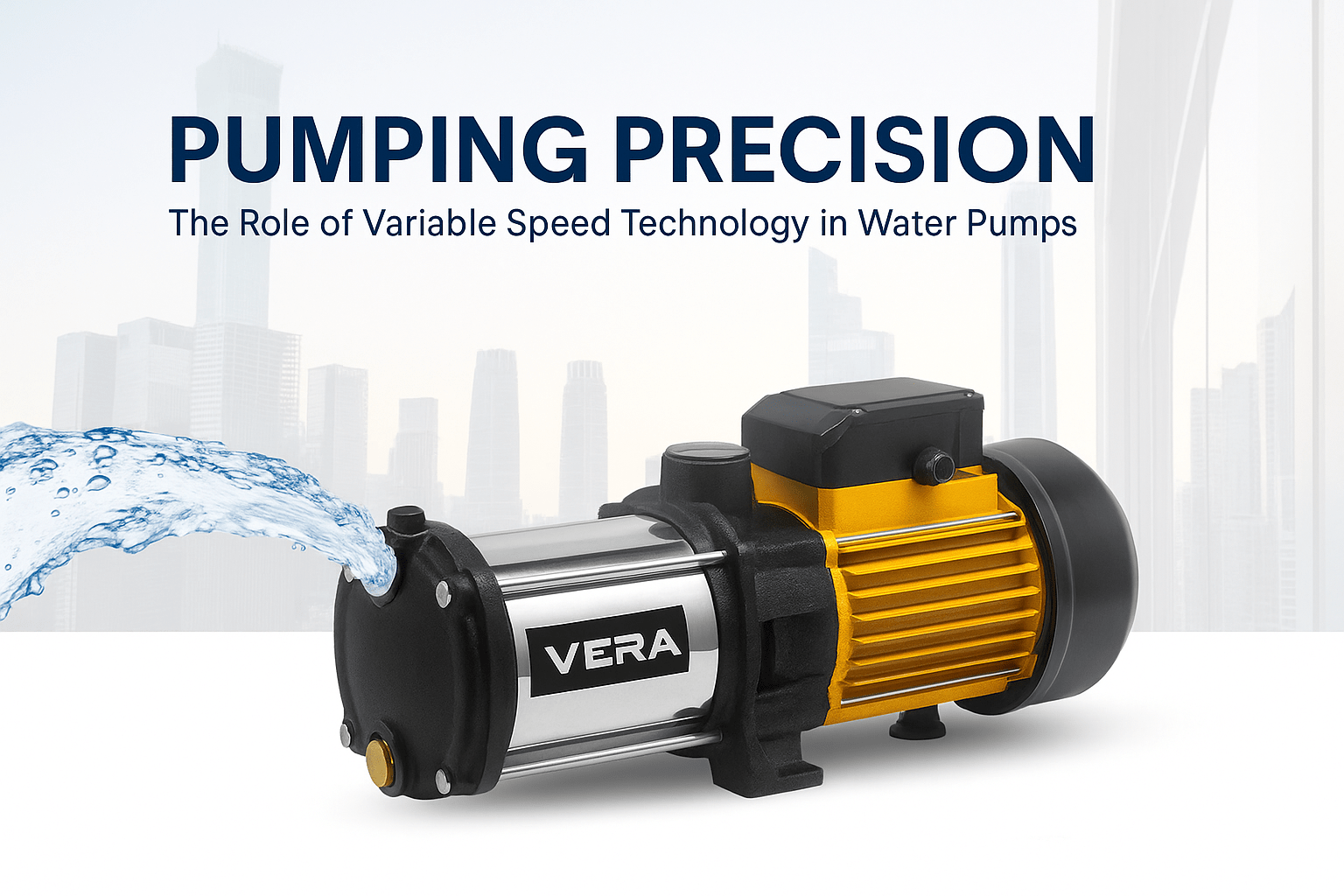Variable speed technology, commonly referred to as Variable Frequency Drive (VFD), has revolutionized the performance and control of water pumps. This innovation enables pumps to operate at variable speeds, adjusting dynamically based on real-time demand. Unlike conventional fixed-speed pumps, which consume constant energy regardless of flow requirements, water pumps equipped with VFD technology modulate their speed to ensure optimal performance and energy efficiency.
One of the most significant advantages of modern water pumps with VFD is the ability to maintain constant pressure in a system. By continuously monitoring flow and pressure, the pump can automatically increase or decrease speed, avoiding water hammer effects, pump cavitation, and system stress. This ensures smoother operations and extends the life span of water pumps across various applications.
Water pumps enhanced with variable speed technology are also recognized for their energy-saving capabilities. By operating only as needed, they reduce electricity usage during low-demand periods, resulting in lower utility costs and a reduced environmental impact, making them an excellent choice for sustainable infrastructure.
Another benefit is the integration of smart monitoring and control systems. These allow remote supervision of pump activity, pressure, flow rate, and energy consumption, helping operators prevent failures and ensure timely maintenance. This level of oversight improves the reliability and lifespan of water pumps in both small- and large-scale systems.

Types of Water Pumps and Their Applications
The true potential of VFD is best understood when applied across various types of water pumps, each serving unique functions:
1. Centrifugal Water Pumps
Centrifugal water pumps are the most widely used type in both domestic and industrial applications. They work by using a rotating impeller to transfer water. When equipped with VFD, these pumps can adjust speed to meet changing flow demands, increasing efficiency and lowering energy use.
2. Submersible Water Pumps
These water pumps are designed to operate while fully submerged in water, commonly used in wells and drainage systems. With VFD technology, submersible pumps can adapt to varying water levels and demand, improving system efficiency and protecting the motor from overuse.
3. Booster Water Pumps
Booster pumps are used to increase water pressure in residential buildings, commercial complexes, and irrigation systems. VFD technology ensures that pressure remains consistent regardless of how many outlets are in use, enhancing comfort and system longevity.
4. Multistage Water Pumps
Multistage water pumps consist of multiple impellers to generate high pressure, making them suitable for applications like water supply systems and industrial processing. With variable speed control, these pumps can operate more precisely and efficiently.
5. Peripheral Water Pumps
Peripheral pumps are generally used for small-scale domestic water supply needs. Although less powerful than other types, when integrated with VFD, they become much more efficient and reliable for light-duty tasks.
6. Solar Water Pumps
Solar water pumps are gaining popularity in remote or off-grid areas where solar energy is the primary power source. VFD-equipped solar pumps can regulate output based on sunlight availability, maximizing performance even during fluctuating solar conditions.
Sustainability and Operational Benefits
Using variable speed technology in water pumps significantly contributes to environmental sustainability. By consuming only the required amount of energy, these pumps help reduce carbon emissions and lower the ecological footprint of water systems. This makes them ideal for green building projects and organizations focused on sustainability.
In addition to being energy-efficient, VFD-driven water pumps offer quieter operation and reduced mechanical stress on system components. This leads to fewer breakdowns and lower maintenance costs, making them a cost-effective choice in the long term.
Conclusion
As the demand for smart and efficient water management systems grows, variable speed technology is becoming an integral part of modern water pumps. Whether used in residential homes, agricultural fields, industrial plants, or municipal water networks, VFD-equipped water pumps offer a versatile and efficient solution.
From maintaining constant pressure and reducing energy use to providing advanced monitoring and scalability, these pumps address a wide range of operational needs. Investing in water pumps with variable speed capabilities not only improves system performance but also ensures sustainability and long-term savings.
In a world where every drop counts, intelligent water pumps powered by variable speed technology are paving the way for smarter, more efficient water distribution systems.






